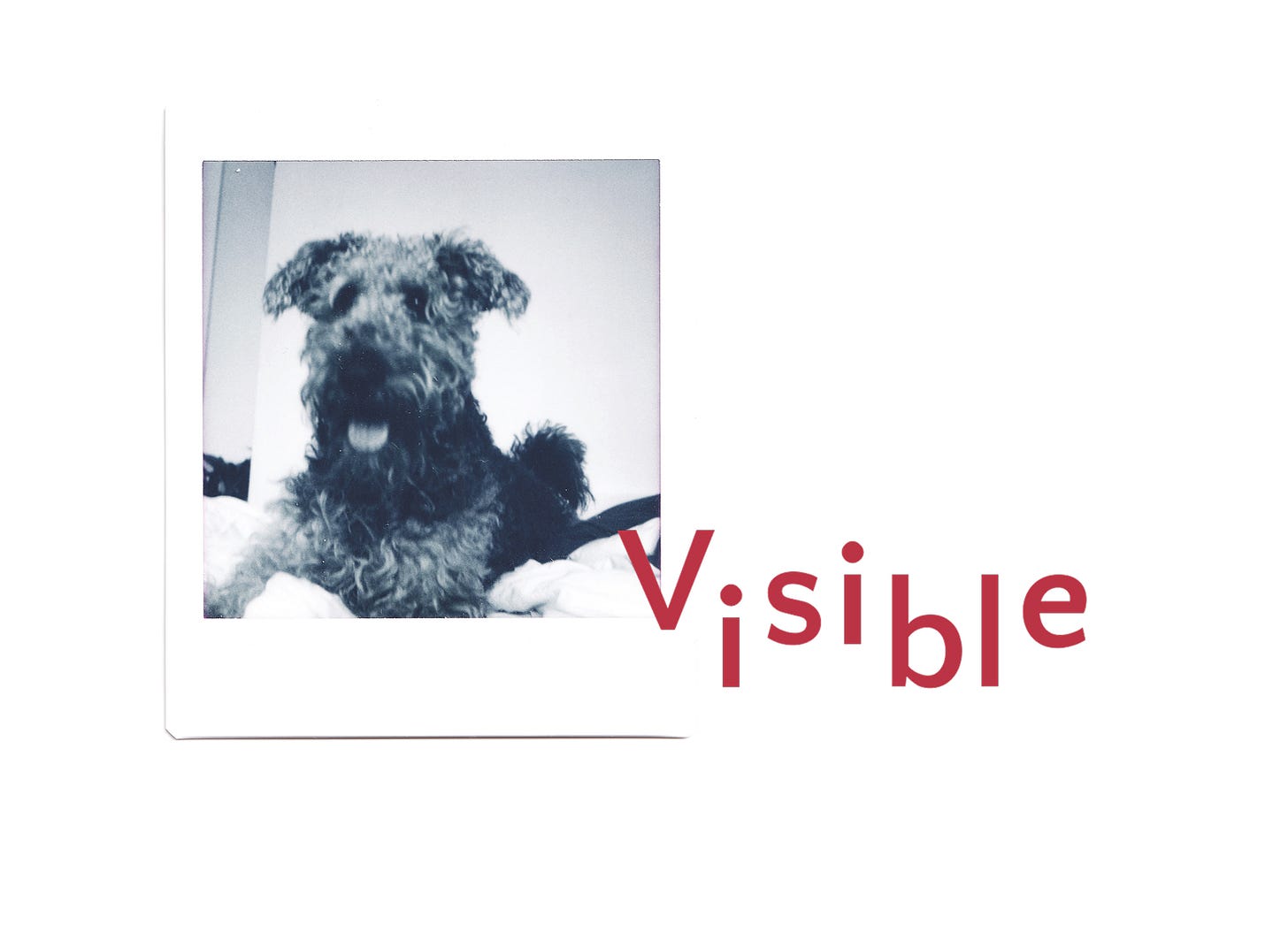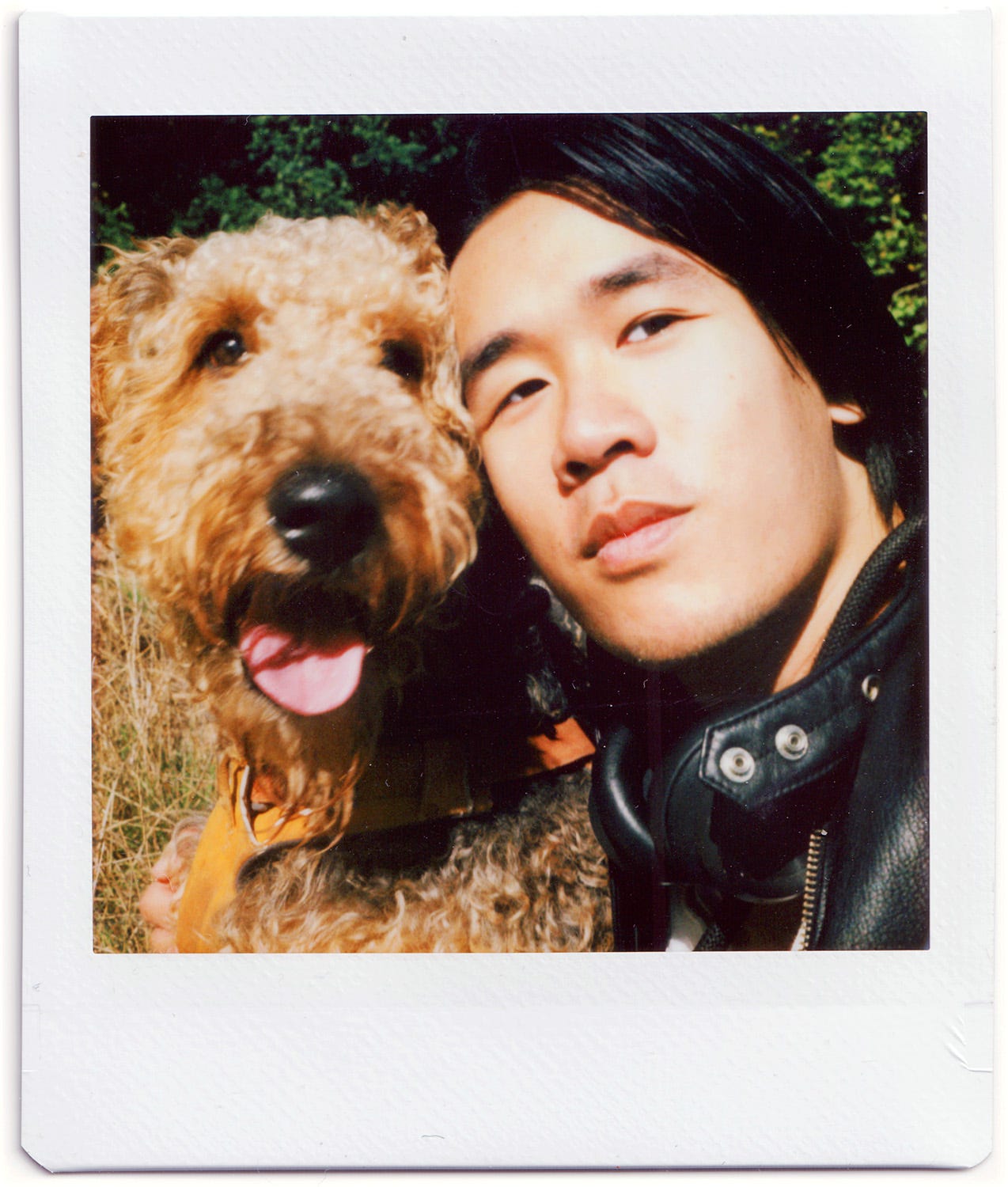Why Polaroids?
From the Co-curator of the "Instant Film as Contemporary Art Monthly Series"
I started taking polaroids because of my dog. In 10 years when I look back at his polaroids I would probably cry. At a time when we see so many digital and AI generated images everyday, polaroids feel real. They can be framed and staged, but the moment they capture nevertheless existed. I love to sit together and talk while a polaroid develops, then review the image together with the people I photograph. There is something quite magical about seeing the image emerge — I have even had people take videos of the development process. To be sure, I photograph with Fujifilm Instax Square and I do not take photographs digitally to be printed on “polaroid printers”. I use polaroid here to refer to instant film generally.
As a former fashion week photographer, I have photographed a lot of supermodels digitally, including Bella, Gigi Hadid, and models who graced the covers of Vogue magazine. I understand the appeal of digital. They photograph well in a wider range of lighting conditions, they produce higher resolution images which can be scaled up for huge commercial prints, they are more beginner-friendly, and they let you click-click-click away until you get that perfect shot.
Photography is quickly changing with AI. Despite the Photoshop liquify “face-shaping” tool and other retouching techniques in the past decades, digital photography had some semblance to reality. That no longer holds with AI’s rapidly advancing capabilities. However little a claim digital photography has to documenting reality, our confidence has been shaken further.
Some fashion brands have already started to adopt AI generated images, and Vogue magazine faced backlash a few weeks ago for featuring an AI generated model in an advertisement by the fashion house Guess. There is a lot I can say about why I dislike this trend: it displaces models, hair stylists, makeup artists, and photographers; it does not showcase the tailoring; it uses vast amounts of fresh water to create the AI-generated image… Yet commercial interests are likely to take precedence over these concerns.
Where does that leave photography and photographers? What is our relationship with photographs? Who are our photographs for? I co-curate the Instant Film as Contemporary Art Monthly Series to explore these questions. To relate instant film to contemporary art is to imagine it as a deeply emotional, intentional, and personal medium. They can still be shared with people around the world once scanned, but the emphasis is on creating meaning for those who are present during the instant film process. There will always be a place for digital photography. It is not “dead”. It is just no longer the focus of my contemporary art practice.
In my “Letter from the Founding Editor” for Visible, I said I liked that the magazine is honest about creatives’ desire to be seen and the financial rewards of being seen. It is important to be honest here too: commercial interests are one of the drivers of photography just as they are for contemporary art. One can even argue that low cost image-making gave rise to photography’s popularization in the first place.
Instant film is commercially viable. Find a good scanner and you can put instant film photographs on billboards. Show the client your photographs during the shoot and take the guesswork out of 35mm / medium-format film. Instant film in this case is not just the work-in-progress to support analogue film, the instant film process is the deliverable. Having someone to bear witness to moments in your life — even the moments that appear mundane in our ever-changing world, is quite a joy.
To be intentional with instant film is not easy. It is technically demanding and it requires a lot of light. That said, a decent instant film camera is still a fraction of the cost of DSLRs and mirrorless cameras. I do wish a company would produce instant film with healthier chemicals. But there is room for photographers here and room for personal, creative expression. I have found the instant film community incredibly welcoming. I hope you will too. I cannot wait to hear more about your work.
M. Freddy
M. Freddy is a contemporary artist and researcher on systems change. Author of 5 Ideas from Global Diplomacy, he has been an advocate for the idea of culture as critical infrastructure and presented at venues including MIT, Boards Impact Forum, as well as the United Nations. He currently co-directs the Center for Global Agenda (CGA) and directs the Venture Strategy Group (VSG) at Unbuilt Labs, serves as an Expert at UNESCO, and mentors at the Yale University Tsai Center for Innovative Thinking. As part of his contemporary art practice, he draws, conducts instant film photoshoots, co-organizes the “Instant Film as Contemporary Art Monthly Series”, and edits Visible Mag. He holds a B.F.A. from the Parsons School of Design as well as an M.A. from Johns Hopkins University. He was also a Departmental Visiting Student at the University of Oxford.




